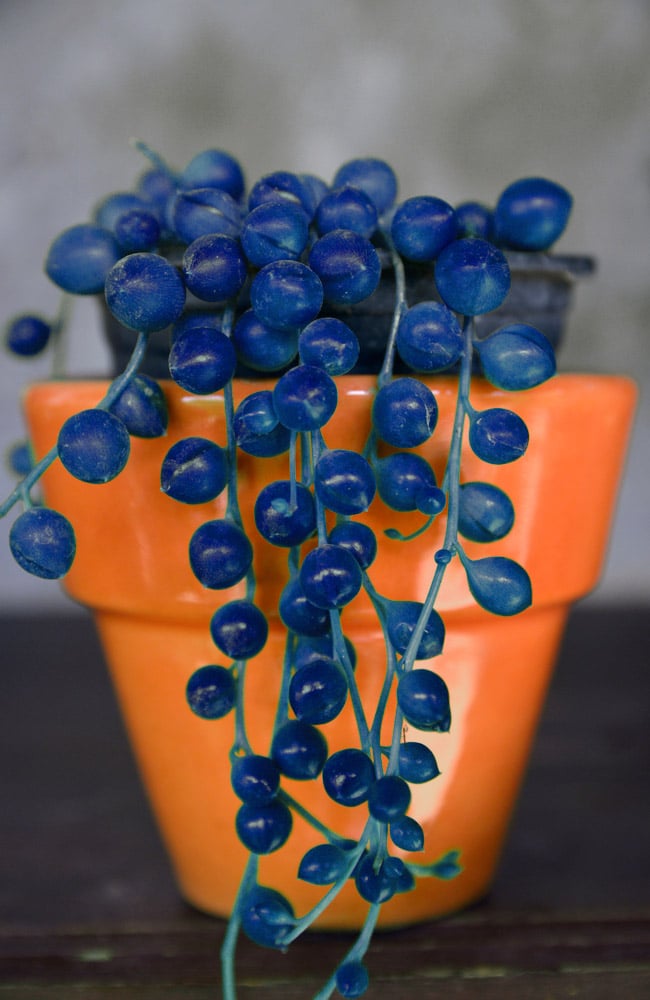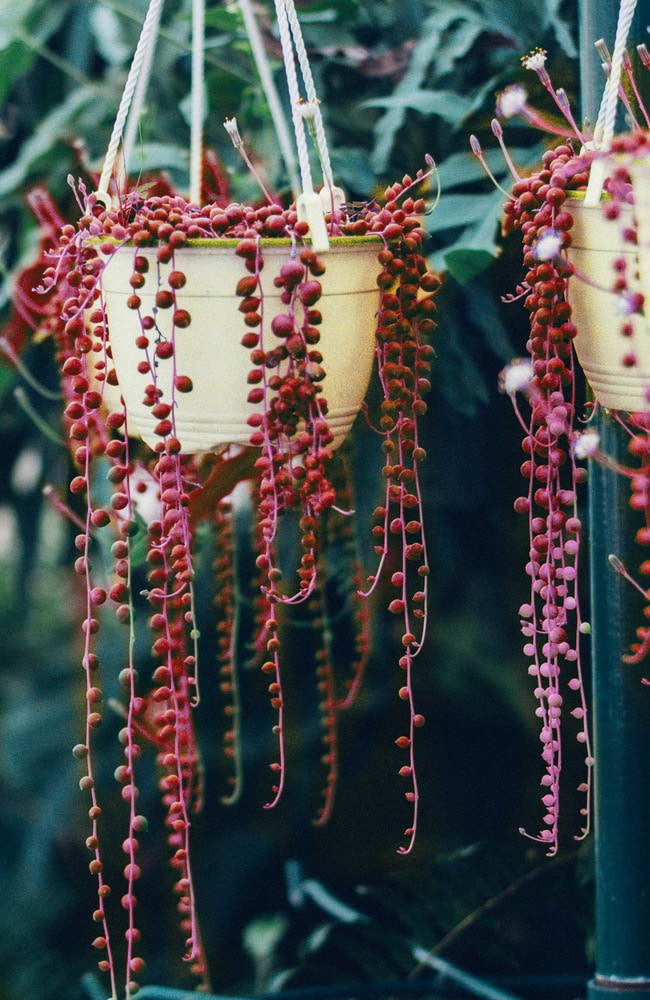Blue and Purple String of Pearls Plants look absolutely stunning! But Should you buy them?
You’ve probably come on this page because you’re interested in buying an unusually colored String of pearls plant or because you have questions about them.
Well, we have the answers.
Keep reading to learn more about these beautiful plants and, more importantly, whether you should buy a blue variety.
Senecio Rowleyanus
When we talk about String of pearls, we’re not talking about a pearl necklace. Instead, we’re talking about the beautiful, flowing plant also scientifically known as Senscio rowleyanus.

This plant also often goes by other names such as rosary string of beads plant. It is a beautiful cascading succulent with peculiar sphere-like leaves.
This vining succulent belongs to the Asteraceae family and is native to southwest Africa. If raised properly, it can produce small white blooms that have the slight smell of cinnamon.
Should You Buy A Senecio Rowleyanus
The answer is a resounding YES!
It is a very easy plant to take care of indoors. Its interesting appearance provides for a unique focal point for your home. They look beautiful spilling out of a planter or a hanging basket.
You won’t be disappointed in your decision of buying or raising this succulent. It will surely be a topic of conversation when your friends or neighbors see it in your living room.
Buy the Plant Rather Than Buying the Seed
We recommend that you buy an actual String of pearls plant instead of growing from seed when possible.
When you buy a plant, you forego the most challenging stages of germination and also growing the plant through its most vulnerable stages as a seedling. Furthermore, it can take a long time before you see the results of your hard work when you are growing from seed.
Let the experts in the nurseries do the hard work of growing from seed (or propagating their plants for you). This will save you a lot of time, and as we all know, time is money.
However, there is an even more important reason we discourage buying seeds. Keep reading to find out why.
Oddly-Colored String of Pearls Plants
Blue Plants
If you have seen a picture of a blue Senecio Rowleyanus, you probably were like me…absolutely mesmerized—an attractive cascading plant with a surreal color.

Well, sorry to break the news to you, but it is surreal for a reason.
They do not exist. In fact, the image you see above is a shop that I photoshopped. It’s not hard to do and can be easily done to fool you into thinking such a plant actually exists.
Purple Plants
As you might have guessed by now, purple String of pearls don’t exist either.

In most cases, when a plant looks too good to be true or too fake to be true, you’re probably right.
With very few exceptions, most plants need to have some aspect of green foliage. The chlorophyll within this green foliage allows the plant to produce energy for itself (via the sun and photosynthesis).
Other Fascinating Colors
You guessed it. Other exotic colors don’t exist either. Fake, fake, fake.

Stay Far Away Sellers Selling Oddly Colored Plants
If you look at sites like eBay, there are many people selling these oddly colored succulents. How do they get away with it?
Most of these sellers scam people by selling the seeds of these exotic colored plants. They give false promises that when the seeds germinate, you will have your unique succulent.
However, the seeds are not so unique. Sometimes, they may not even be a String of pearls plant at all. By the time you germinate your seed and raise it to the point that you realize it is not what it was promised to be, it is too late to get a refund.
These scams are common, including people selling blue or purple plumerias and even blue watermelon plants.
Stay far away and when it comes to succulents, always try to buy the plant itself rather than seeds.


Thank you for the information. I would have fallen for their trick. 😂😂 I was desperately searching for the blue one.
Me too!!!
Me too!! ♥️🙏🏻
Thank you for this clarification! I figured they were fake since they appear entirely blue which would not facilitate photosynthesis at all.